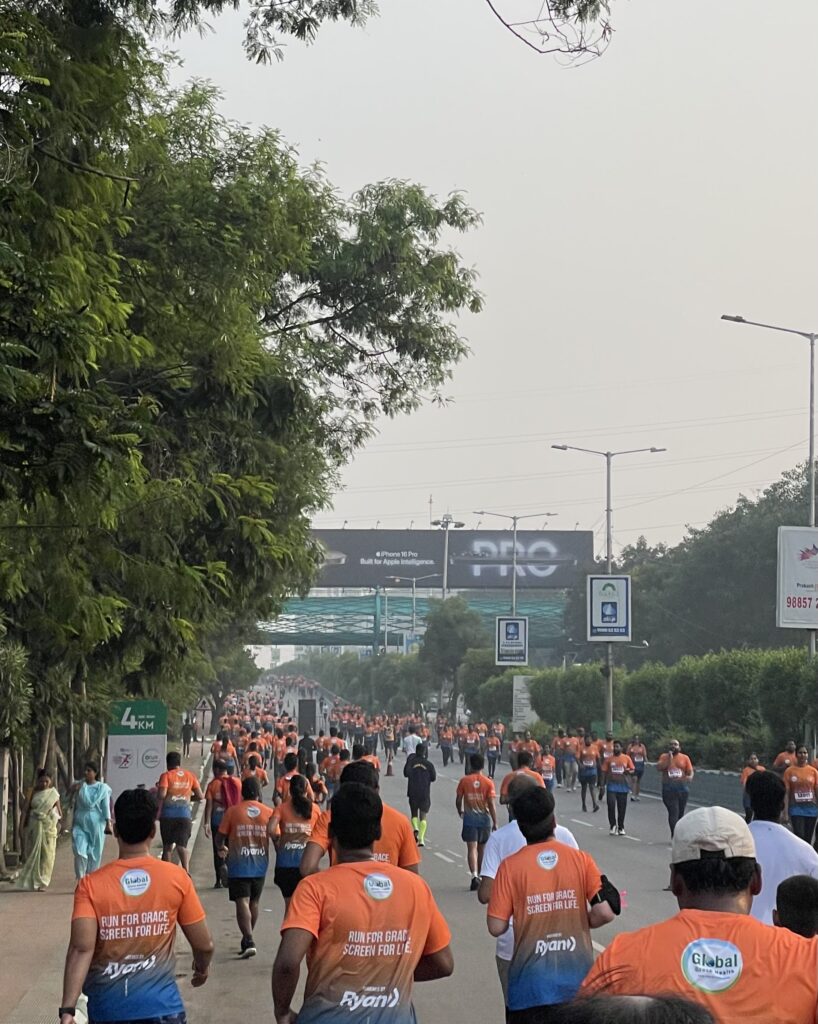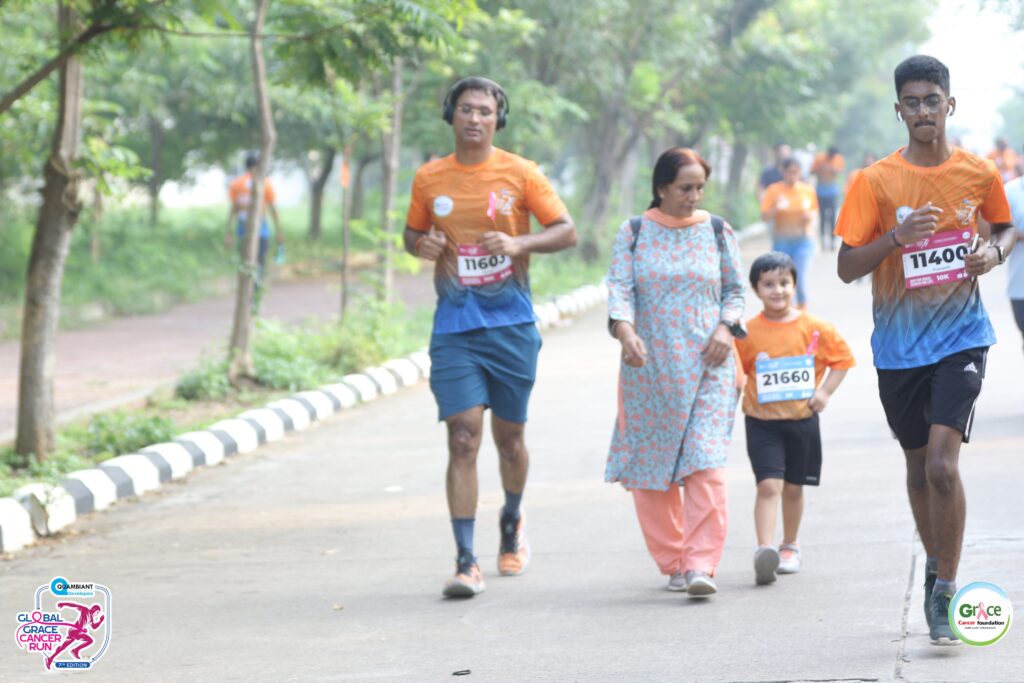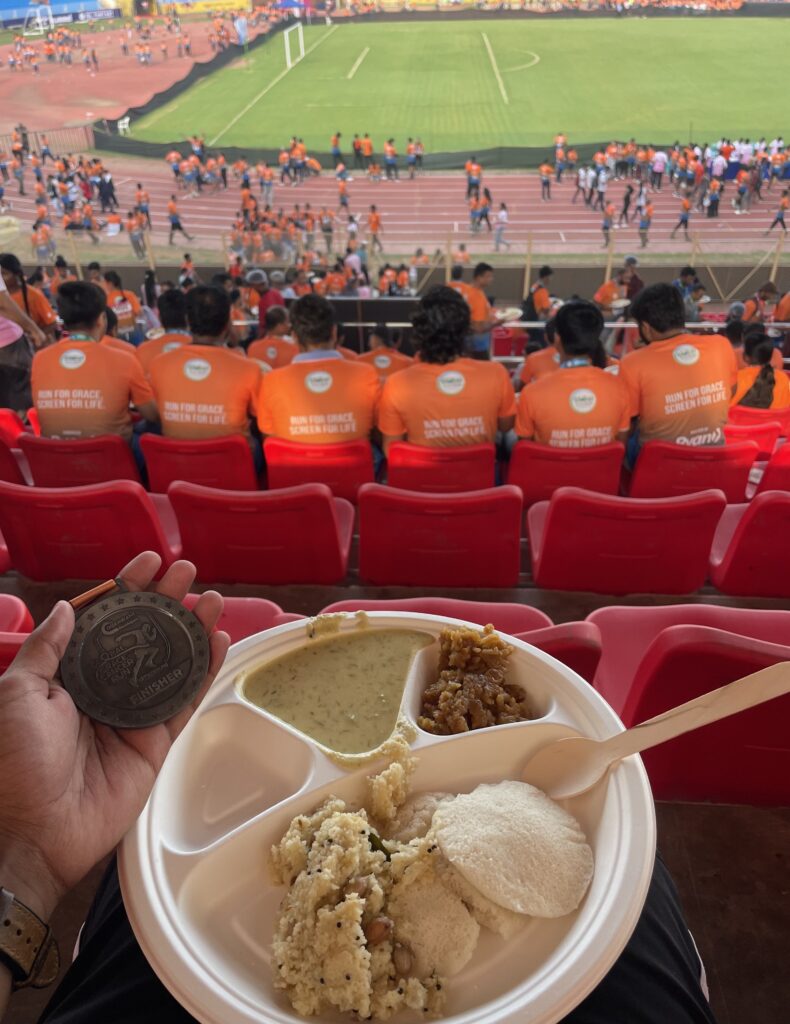This blog is about my experience during my first 10K run, so that you can be aware of what to expect and how to prepare if you have a race or marathon coming up. I’ll share my personal tips, challenges, and key takeaways to help you feel more confident and prepared for your own run.
THE MORNING
I woke up at 4:20 AM for the run, which was scheduled for 6:30 AM.
The first thing I realized in the morning was that my throat was dry and my nose was blocked.
Bang.
What a great way to start a day when you’re supposed to run 10 kilometers!
After my morning routine, I did some stretching and jogged around the terrace as a warm-up.
Once I was done, I took a 2-minute cold shower and pulled on my T-shirt with the race bib. Not professionally recommended, but the shower really woke me up and got me going.
We headed to the event center, with my favorite pop songs playing in the car.
PRO TIP: Along with warming up, stretching, and cold showers, I’d also recommend listening to your favorite music before a long run.

(The race, Global Grace Cancer Run, was hosted by the Grace Cancer Foundation. It is helping raise awareness and funds for cancer prevention and treatment).
THE FIRST 5 KILOMETERS
As dawn broke, the race began.
I’d heard this common advice all over the internet:
- First third of the run—go slightly slower than your desired pace.
- Second third—run at your desired pace.
- Final third—go slightly faster than your desired pace.
Despite knowing this, I couldn’t quite follow it.
I started out fast. I had no clue what my ideal pace was and assumed I was starting slow—when in reality, that was the fastest I could go for a 10K run.
Naturally, my pace dropped as the run progressed.
Let me warn you: though you may want to start slower, your energy peaks at the start of the run and gradually dips. This isn’t just your experience; it happens to everyone.
Thereby, most people tend to run faster in the first third of the race. The only way to overcome this is through practice and pacing. Try warming up by running slower than necessary in the first few kilometers. It’s okay if others overtake you. You’ll likely catch up toward the end and might even finish ahead of them.

THE LAST 5 KILOMETERS
I had my AirPods in for the first 4.5 kilometers, but after a while, the music lost its motivational effect, so I took them off.
No matter how hard you try, and no matter how many David Goggins videos you watch beforehand, during your first long run, there will be a point where you HAVE to stop jogging and walk instead.
For me, that moment came at around 5.5 kilometers. I started alternating between jogging for a few hundred meters and walking the same distance.
Not ideal, as I mentioned. By the halfway mark, you want to be running at the pace you planned.
The last two kilometers were good, though. The walking breaks had restored my energy, and I was back to running almost at the pace I started with.
I finished the race in 75 minutes, ranking 471st out of 1800 participants.
Crossing the finish line and having a hearty breakfast afterward is one of the best things you can experience after running 10 kilometers. :))

THINGS I CARRIED DURING THE RUN
- Phone
- AirPods
- Handkerchief
Carrying your phone is optional, but many people prefer to take it along. Earphones or headphones are also up to you. You’ll notice that about half the runners, if not more, go without them.
A handkerchief is a must. I highly recommend carrying a lightweight one to dab sweat, especially if the weather is warm.
FAQs I HAD BEFORE STARTING OUT
(You might have the same doubts):
1. Where do I put my phone while running?
A. You can use an armband or a running belt. If you do not have those, you can hold the phone in your hand and run—it won’t hurt as long as it is 10 kms or less. Avoid putting your phone in the pocket of your shorts, especially if the pocket is large, as it can cause inconvenience.
2. Should I eat before the run?
A. Water is usually enough. But eating a light meal 2-3 hours before the run is okay.
3. Is it okay to eat the snacks they offer and/or drink water (hydrate) during the race?
A. Water or ORS at the hydration stations and small snacks (like dates) if needed are okay, but do not overeat during the run.
4. Will jogging the entire time help me finish in good time?
A. Yes. In fact, jogging is most recommended, especially if you pace yourself well.
5. How long should I train before attempting a 10K?
A. If you’re already fit and in shape for a long run, a couple of weeks is enough. If you’re starting from scratch, 4-6 weeks of training should do it.
6. Should I focus on speed or endurance for my first 10K?
A. Focus on endurance. Being able to run the distance is more important than speed.
7. What’s the best way to breathe while running?
A. Inhale deeply through your nose and exhale through your nose or mouth. Try to maintain a steady rhythm.
8. How much sleep should I get the night before?
A. Aim for 7-8 hours of sleep to feel rested and energized.
9. What should I do if I feel pain during the run?
A. If the pain is minor, slow down or walk. If it persists, walk till you see a volunteer and inform them about it to avoid injury.
10. Should I set a time goal for my first 10K?
A. Anywhere from 1 to 1.5 hours is decent for a first-timer. Don’t worry too much about timing—just focus on finishing strong and giving it your best effort.
In the end, completing my first 10K run was not just about the distance—it was about pushing my limits and learning from the process.
Whether you’re a seasoned runner or just starting out,
— it’s not about staying comfortable but embracing the challenge and pushing your limits.
— it’s not about how fast you finish but how strong you feel crossing that finish line.
Good luck with your race. The run is not supposed to be easy, but that’s what makes it worth it.
While you’re here, consider checking out my other blogs here!
1 Comment
Chai · October 11, 2024 at
Nice